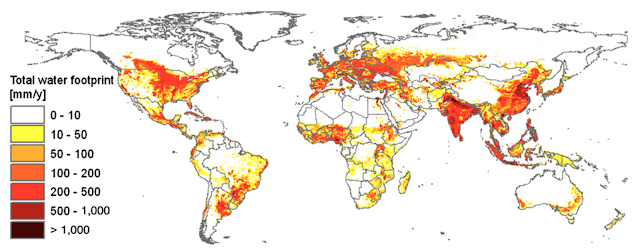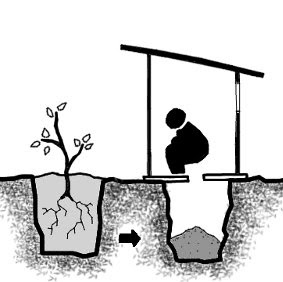The Nadorcott: More Than Meets The Eye
Nadorcott fruit from UK supermarket chain, Sainsbury (Image by Alexander Lian)
Easily peelable, seedless and bursting with flavours, the mandarin oranges are simply irresistible. In the United Kingdom(UK) right now, one can easily pick them off the shelves from supermarket chains like Sainsbury to satisfy their daily dose of vitamin C. Beyond nutrition, a closer look at the labels would tell anyone that these are grown specifically from the Kat River in South Africa and is of the Nadorcott variety.
Did you know that the UK is the largest importer of South African citrus fruits? In fact, it is forecasted that South African citrus produce accounts for 25% of global trade in 2018. The Nadorcott can be seen as a form of commodity. Capitalizing on the appeal of its desirable characteristics, the agricultural produce inevitably conceals multidimensional issues from consumers. The commodification of agriculture and their impacts is evident in both the development of the palimpsest landscapes and social impacts in South Africa as well as greater parts of Sub-Saharan Africa. Agriculture in itself is a water demanding sector and the water footprint of various food that impacts agrarian communities can often be easily overlooked.
As we savour the fruits of labour, parts of Sub-Saharan Africa face a more pressing problem: a whopping 24.3% of the population are undernourished and 25% faces food insecurity (FAO 2018). All these on top of a water scarcity problem, temporal variability in water supply, episodic droughts and access to safe and clean water that perpetuates in their society. And that leaves us with several questions:
Who truly enjoys these fruits of labor? Who wins and who pays?
What are the lessons we can learn from citrus agriculture?
How are we facing up to Africa's food crisis?
Can Africa feed itself?
How are we facing up to Africa's food crisis?
Can Africa feed itself?
I hope to answer some of these questions in my research and to take on an interesting approach similar to Cook (2004) descriptive narrative on a commodity that provokes questions, beyond tracing flows and connections but also critically investigating the relationships that are embedded within. Through this, I will also holistically uncover some contextual complexities often hidden in subjective, unrepresentative or misrepresented globally adopted metrics (Zeitoun 2016; Damkjaer & Taylor 2017) and beyond statistics and figures. Concurrently, I seek to examine the innovation and sustainability of agriculture in parts of Sub-Saharan Africa. Lastly, I will also look at how climate change will consequently affect water and agriculture at local and regional scales.
Join me on my journey as I uncover a commodity story of how citrus fruits and agriculture presents opportunities and challenges in relation to water and development in Africa!
References
Cook, I. (2004). Follow the thing: Papaya. Antipode, 36(4), 642-664.
Damkjaer, S., & Taylor, R. (2017). The measurement of water scarcity: Defining a meaningful indicator. Ambio, 46(5), 513-531.
Farolfi, S., & Abrams, M. (2005). Water uses and their socio-economic impact in the Kat River catchment, A report based on primary data. Unpublished Water Research Commission Report, Project, (K5/1496).
FreshPlaza (2018, October 05). Overview Global Mandarin Market. Retrieved from: http://www.freshplaza.com/article/9029622/overview-global-mandarin-market/
Food and Agriculture Organization of the United Nations. (2018). The State of Food Security and Nutrition in the World 2018: Building Resilience for Peace and Food Security. FAO. Retrieved from: http://www.fao.org/3/I9553EN/i9553en.pdf
United States Department of Agriculture Foreign Agricultural Service. (2018). Citrus: World Markets and Trade. Retrieved from: https://apps.fas.usda.gov/psdonline/circulars/citrus.pdf
Zeitoun, M., Lankford, B., Krueger, T., Forsyth, T., Carter, R., Hoekstra, A. Y., ... & Swatuk, L. (2016). Reductionist and integrative research approaches to complex water security policy challenges. Global Environmental Change, 39, 143-154.








Hi Alex,
ReplyDeleteReally interesting intro! I always find it fascinating how global flows of food are interconnected and unseparately entangled without us even noticing. I think it is important to stop for moment, when shopping for groceries, and think about where products, that we buy on a everyday basis, come from and what kind of social, economic, political and cultural relations they might be incorporated in them. Especially power relations hidden from the consumer´s eye, but embedded in the porduction of all the food we buy, are so difficult to grasp, when walking between the shelves in the grocery store.
Hello Alina! Thanks for sharing the same sentiments and for reading this post. Indeed, these relations that you have pointed out are fundamentally important in uncovering narratives hidden from consumers eyes.
DeleteI agree that this blogpost is an excellent start. One point to note is that it is not necessary to list references in your blogpost as you are already putting links to the references directly in the text - this is great and what is expected. Will you address the impact of the recent water crisis in Cape Town on citrus production in UK imports from South Africa?
ReplyDeleteHello, thanks for reading! That's a really interesting question that make me reflect and research on the implications of drought and the water crisis of Cape Town in relation to agricultural exports to the UK. While I do not have a concrete answer, I have gained some insights that I could share with you from a commentary I made recently.
DeleteFirstly, the drought in South Africa that affected Cape Town has uneven impacts in the Western Cape and across the country. While there is a decline in citrus production in the Western Cape, it has been made up for by other parts of South Africa and citrus fruits that are coming to maturity. In fact, net citrus production numbers if I'm not wrong, has even surpassed previous year. (Without going into details of the specific citrus varieties in reports)
Secondly, I would like to mention about trivial factors that I came across in UK imports from South Africa. While not completely relevant, there are other factors affecting UK citrus imports such as the Citrus Black Spots (CBS/Fungal disease) regulated by EU and UK citrus import regulations and South African export controls. In addition, in lieu of the recent Brexit negotiations, there has also been speculation on how it would affect citrus imports such as varying stance towards CBS and whether UK will reduce trade barriers and thus benefiting South Africa.
Therefore, overall, in terms of potential exports to the UK, I postulate that there would not be huge disparities (although I may be wrong) at the moment.